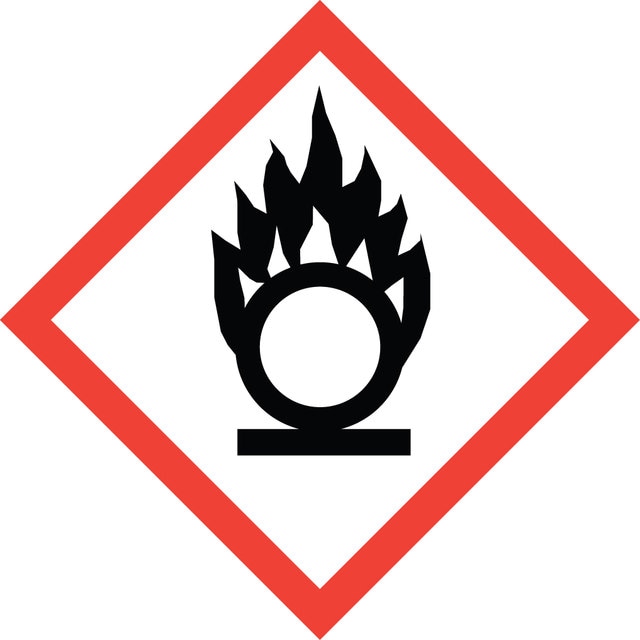Select a Size
About This Item
Product Name
Potassium permanganate, ACS reagent, ≥99.0%
InChI key
VZJVWSHVAAUDKD-UHFFFAOYSA-N
InChI
1S/K.Mn.4O/q+1;;;;;-1
SMILES string
[K+].[O-][Mn](=O)(=O)=O
grade
ACS reagent
assay
≥99.0%
form
crystals, granules or powder
reaction suitability
reagent type: oxidant
impurities
≤0.005% N compounds
≤0.2% insolubles
pH
7.2-9.7 (20 °C, 20 g/L)
anion traces
chloride, chlorate (as Cl-): ≤0.005%
sulfate (SO42-): ≤0.02%
Quality Level
Looking for similar products? Visit Product Comparison Guide
Related Categories
Application
- sulfonal (2,2-bisethylsulfonyyl)propane
- cinchomeronic acid (pyridine-3,4-dicarboxylic acid)
- isonicotinic acid (pyridine-4-carboxylic acid)
- manganese(IV) sulfate
General description
signalword
Danger
Hazard Classifications
Acute Tox. 4 Oral - Aquatic Acute 1 - Aquatic Chronic 1 - Eye Dam. 1 - Ox. Sol. 2 - Repr. 2 - Skin Corr. 1 - STOT RE 2 Inhalation
target_organs
Brain
Storage Class
5.1B - Oxidizing hazardous materials
wgk
WGK 3
flash_point_f
Not applicable
flash_point_c
Not applicable
Regulatory Information
Choose from one of the most recent versions:
Already Own This Product?
Find documentation for the products that you have recently purchased in the Document Library.
Our team of scientists has experience in all areas of research including Life Science, Material Science, Chemical Synthesis, Chromatography, Analytical and many others.
Contact Technical Service



